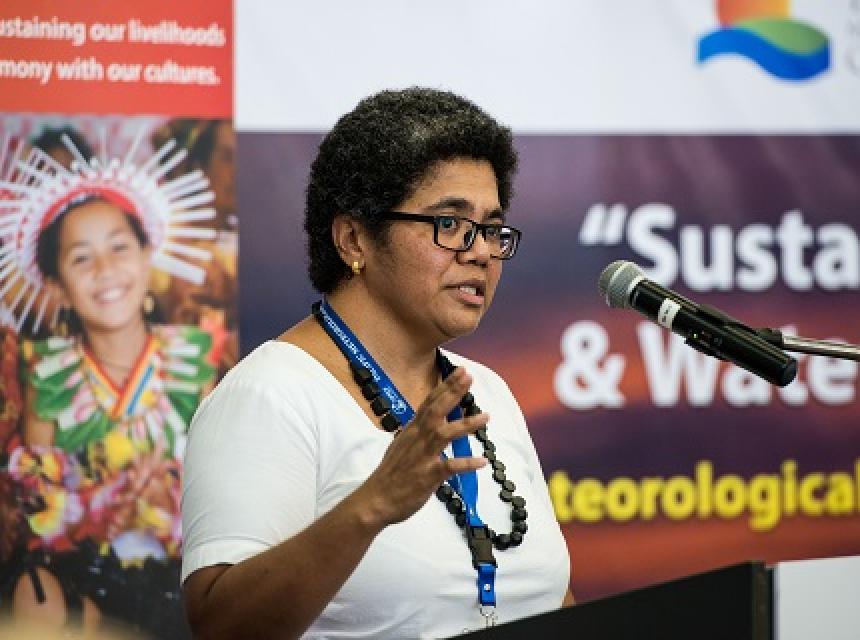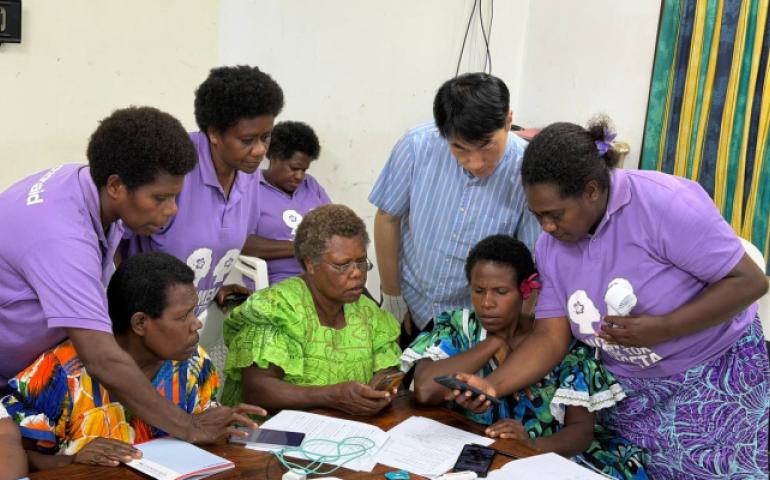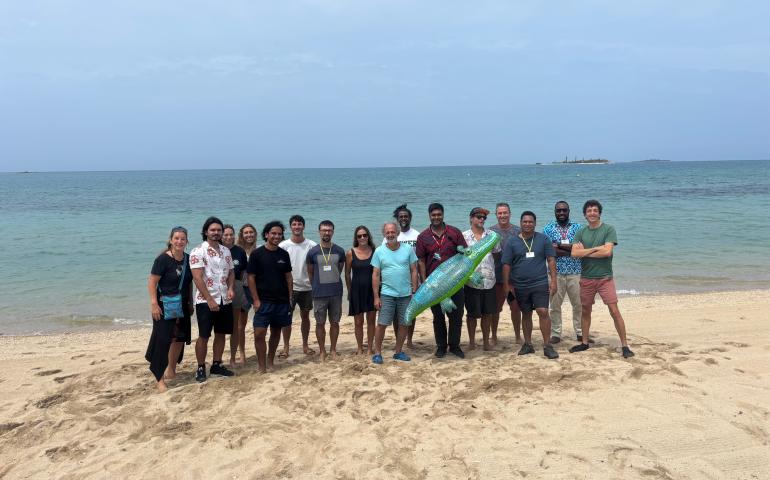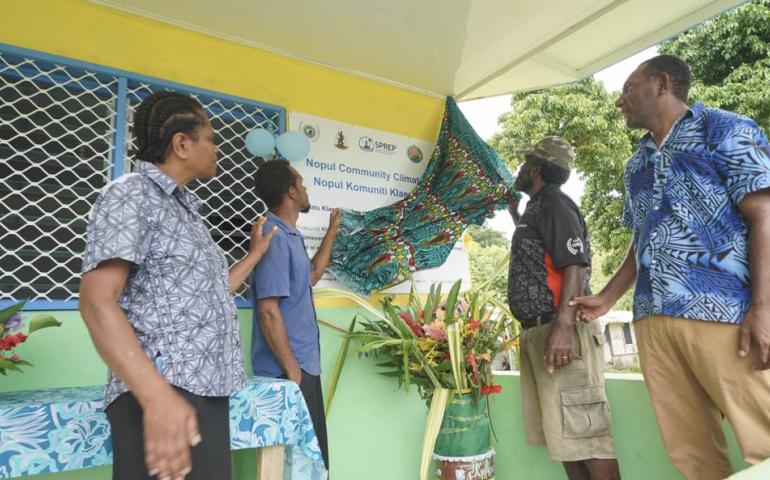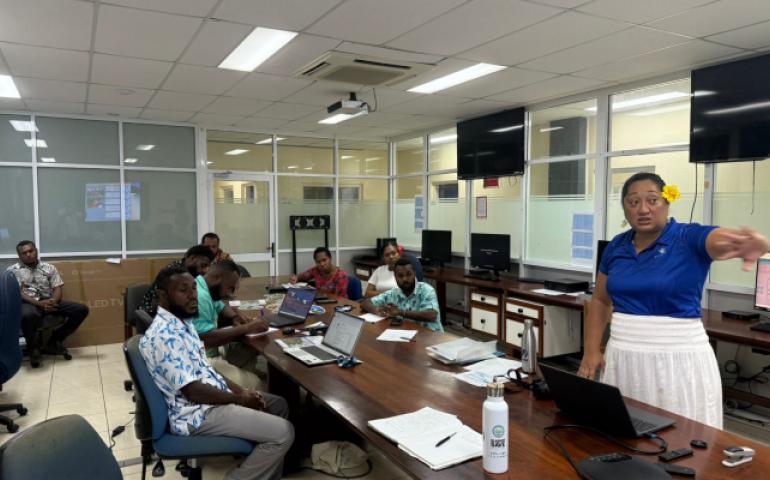Pacific Resilience Program moves forward
By Linny Folau of Matangi Tonga Online
16 August, 2017, Honiara, Solomon Islands, PMC-4 – A regional program aimed at strengthening Pacific Island countries resilience to natural disasters and climate change is moving forward with projects in Samoa and Tonga.
Known as the Pacific Resilience Program (PREP), it is a partnership between Tonga, Samoa, Marshall Islands, Vanuatu, Pacific Community (SPC), Pacific Islands Forum Secretariat (PIFS) and the World Bank, and includes initiatives for early warning tools, risk reduction investments and financial planning for disasters.
Litea Biukoto, PREP Program Manager at Pacific Community (SPC), presented the program and its components with Tonga and Samoa to the Fourth Pacific Meteorological Council meeting in Honiara, Solomon Islands, yesterday.
She said the program had been slowly moving but this was to ensure what they were rolling out was in line with the initial plans for Tonga and Samoa.
“The success of the program was the partnership and collaboration between the national emergency bodies, regional organizations and its partners.”
Signed off in 2015, the five-year program has allocated USD$16.759 million to Tonga to enhance its Multi-Hazard Early Warning System (MHEWS).
Samoa has an allocation of USD$13.9 million for the modernization of its observation infrastructure and data management system, forecasting and warning system.
Litea said over the past two years Tonga and Samoa have become more involved in progressing their national activities.
National projects
Tonga is investing in their infrastructure with a new building that will accommodate both the Tonga Met Services and the National Emergency and Management Office (NEMO), equipment part and service support.
Litea said the building design for the Tonga headquarters took longer than anticipated.
‘Ofa Fa’anunu, Tonga Met Director said the new office design for NEMO and Tonga Met combined at Mata ki 'Eua on Tongatapu island has been completed, and construction starts in November this year. The building will take 14 months to complete.
The program also includes a new transmitter at Popua for Tonga Broadcasting Commission has been installed for the AM station, which can reach all of Tonga’s islands when there are natural disaster warnings.
“Some of the projects have been implemented while we are still working on others as PREP will not finish until 2020”, ‘Ofa said.
There is a link between Tonga MET services to NEMO and the seismology division at the Ministry of Lands have a common goal of investing in resilience.
Assistant CEO for Samoa’s Meteorology Division Mulipola Ausetalia Titimaea said they have made good progress in improving their warning system for meteorological and hydro met services such as for flooding and tropical cyclones. while enhancing operational and governance activities.
PREP is funded through US$32.29 million in grants and credits from the International Development Association (IDA), the World Bank’s fund for the world’s poorest countries. – #PMC4 #PacificMet
The Fourth Pacific Meteorological Council is being held in Honiara, Solomon Islands from the 14 – 17 August co-hosted by the government of Solomon Islands, the Secretariat of the Pacific Regional Environment Programme (SPREP) and World Meteorological Organization (WMO). This will followed by the Second Pacific Meteorological Ministers Meeting (PMMM) on the 18 of August.
The PMC and PMMM is supported by the Government of Solomon Islands, SPREP, WMO, Government of Australia through the Climate and Oceans Support Programme (COSPPac) and Pacific Australia Climate Change Science and Adaptation Planning Programme (PACCSAP), Government of Finland, National Ocean and Atmospheric Administration (NOAA), United Nations Development Programme through the Resilience in the Pacific (SIDS) project.
The PMC consists of members of the Pacific National Meteorological and Hydrological Services supported by its technical partners, regional organisations, non-government organisations and private sectors.
This article was developed by a Pacific Media Team of Reporters currently providing coverage on the Fourth Pacific Meteorological Council in Solomon Islands. This activity coordinated by SPREP is supported by a partnership between the Government of Solomon Islands, SPREP, Australia funded project (Climate and Oceans Support Program (COSPPac) and UNDP Disaster for Pacific SIDS (RESPAC) project.
The views and opinions expressed in this article are those of the writer and do not necessarily reflect the views of the Secretariat of the Pacific Regional Environment Programme (SPREP) or the United Nations Development Programme (UNDP)both of which provided funding for generating media articles.
- Log in to post comments
